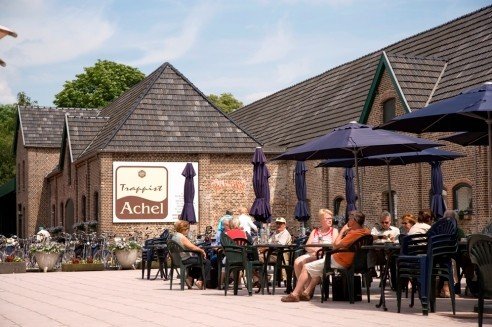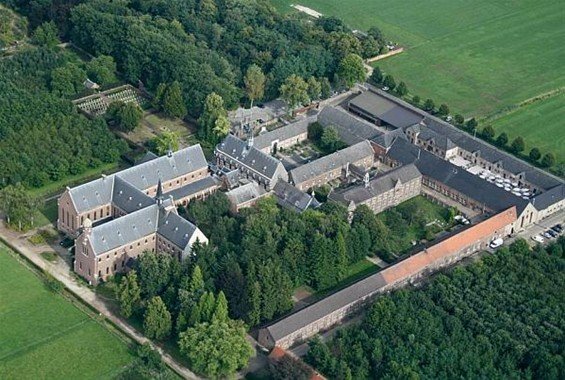Description
North of Hamont-Achel on the outermost border with the Netherlands (towards Valkenswaard and Eindhoven) there was a Roman Catholic church for Dutch Catholics as early as 1656, who were forbidden from attending church services in their country from 1648 to 1672. In 1686 the funds for the establishment of a hermitage (St. Josef) were donated. Since then the place was known as "Achelse Kluis" (Acheler Klause). The convent, which lived according to the Rule of Benedict from 1731, was dissolved by the French Revolution in 1796. In 1846 the Belgian Trappist Abbey Westmalle founded a subsidiary monastery in the Acheler Klause in the form of a priory, which was elevated to an abbey in 1871 and was named Saint Benedict. In 1885 the architect Pierre Cuypers built a neo-Gothic abbey church. In 1917 and 1943 the monks had to evacuate their monastery from the German invaders. In 1946 a new monastery building was erected with a new church, which in 1998 was still equipped with a large organ. In 1998, with the help of Trappists from Westmalle and Rochefort, the monastery brewery, which had been destroyed in 1917, was reopened in order to secure the abbey’s economic existence. In 2011, the abbey, which had shrunk to a few monks, was dissolved and the Westmalle convent was placed under. The monastery was administered by Westmalle until 2018. Since 2018 it has housed a community of the Fazenda da Esperança.














